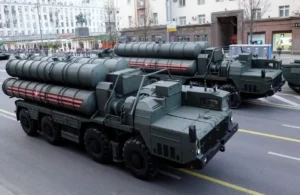Air power has always been central to military dominance. While the United States has relied on stealth bombers like the B-2 Spirit and the upcoming B-21 Raider to project long-range strike capability, China is reportedly developing its own sixth-generation stealth fighter, known as the “White Emperor.”
US Stealth Bombers
B-2 Spirit
- Type: Strategic stealth bomber
- Induction: 1997 (operational with the US Air Force)
- Range: About 11,000 km without refueling
- Payload: Around 18,000 kg (nuclear and conventional weapons, including GBU satellite-guided bombs and nuclear warheads)
- Role: Designed to penetrate heavily defended enemy airspace and deliver massive payloads.
- Strength: Combination of radar-evading stealth and long-range strike ability.
B-21 Raider (Next Generation)
- Type: Stealth strategic bomber (successor to B-2)
- Status: First flight in 2023; induction expected late 2020s
- Features: Improved stealth, modular design for nuclear and conventional payloads, and ability to integrate with modern digital warfare systems.
- Strength: Expected to extend US strategic air dominance further into the 21st century.
China’s White Emperor Fighter Jet
- Type: Sixth-generation stealth fighter (still in development, reportedly a prototype stage)
- Range: Estimated 2,500–3,000 km
- Payload: About 8,000 kg (internal and external weapon bays)
- Role: Air superiority, electronic warfare, and limited strike missions.
- Technology: Advanced stealth coatings, AI-assisted flight, and potentially drone swarm coordination.
- Status: No confirmed operational status; believed to be under secret development.
Key Differences
| Feature | US Stealth Bombers (B-2 / B-21) | China’s White Emperor Fighter |
|---|---|---|
| Category | Heavy long-range bomber | Stealth fighter jet |
| Primary Role | Strategic strike, nuclear delivery | Air superiority, strike |
| Range | ~11,000 km (B-2), longer for B-21 | ~2,500–3,000 km |
| Payload | 18,000+ kg | ~8,000 kg |
| Stealth Design | Flying wing, radar evasion | Stealth coatings, AI avionics |
| Status | Operational / Near induction | Prototype/Development stage |
Strategic Insights
- US Bombers are designed for global reach, capable of flying across continents and carrying massive nuclear or conventional payloads. They act as a strategic deterrent in the US nuclear triad.
- White Emperor is a tactical aircraft, built for air dominance and precision strike, with agility, stealth, and advanced technology integration. It cannot match the range or payload of a bomber but excels in air combat and limited strike roles.
- In short, US Bombers are hammers for strategic strikes, while White Emperor is a sword for air superiority.



 S-500 Missile System: Features, Range, S...
S-500 Missile System: Features, Range, S...
 India Prepares to Launch INS Aridhaman, ...
India Prepares to Launch INS Aridhaman, ...
 Indian Army Carries Out Successful BrahM...
Indian Army Carries Out Successful BrahM...







